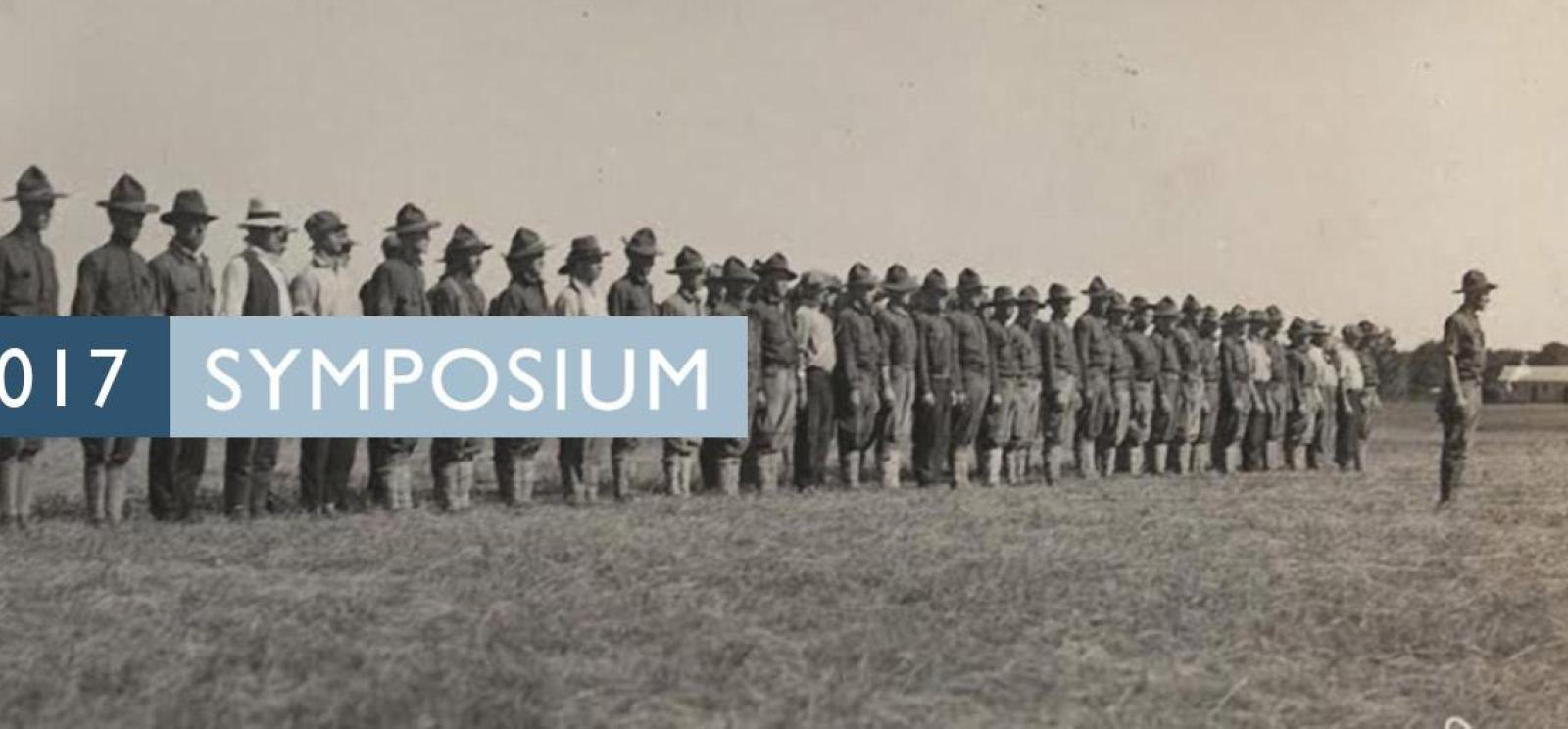Explore the revolutionary year of 1917.
Emerging from its traditional isolation, the United States took its place at the forefront of world affairs in 1917. Mobilizing farms, industries, and individuals, America made fevered changes economically, socially and politically. On the other side of the globe, a radically different form was defined by the Russian people. While these competing visions were voiced, the old idea of taking the land of the vanquished was the vision of elite, eyeing the Ottoman Empire. A year of tenacity, transition and tumult that forever changed the world.
Symposium Highlights
- The Long Road to Peace panel conversation and podcast recording with Jay Sexton and Jennifer Keene on Thursday, Nov. 2 at 6 p.m. (Please schedule your travel accordingly; you will not want to miss this!)
- Presentations by John Calvert, Richard S. Faulkner, Jennifer Keene, Saje Matthieu, Michael Neiberg, Olga Porshneva, Erik R. Scott, and David Stevenson on Nov. 3-4.
- Evening reception and conversations, Nov. 3 at 6:30 p.m.
- Participation in C-SPAN live coverage, Nov. 4
Watch the 2017 Symposium presentations on YouTube
Presenters and Abstracts
John Calvert
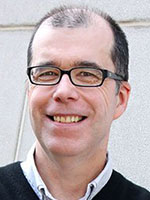
“We Come as Liberators”: Britain’s Middle East Campaigns, 1917
1917 is the year during which the tide turned against the Ottoman Empire in the Middle East. In March, British forces, mostly troops of the Indian Expeditionary Force, captured Ottoman Baghdad. In Dec., Britain’s Egyptian Expeditionary Force, pushing across Sinai into Palestine, captured Jerusalem – in T.E. Lawrence’s phrase “the supreme moment of the war.” Meanwhile, British policy makers issued the Balfour Declaration, promising to support the creation of a Jewish homeland in Palestine once the war was won. As this presentation will make clear, Britain’s campaigns and diplomatic initiatives in 1917 were made with an eye on an eventual post-war settlement &mbash; the consequences of which haunt the Middle East today.
Biography
John Calvert is Professor of History at Creighton University in Omaha, Nebraska, where he teaches courses related to Islam and the Middle East. In addition to earning his PhD and one of two MA degrees at McGill University, he received a diploma from the American University in Cairo. His research focuses on Islamic social and political movements and the British Empire in the Middle East. He is the author of several books, including the widely-acclaimed Sayyid Qutb and the Origins of Radical Islamism (2010). Calvert has also had articles published in The Routledge History of Terrorism (2015) and The Muslim Brothers in Europe: Burdens of the Past, Challenges for the Future (2012). He held Creighton University’s Fr. Henry W. Casper, S.J. Professorship in History from 2007-2014 and was the recipient of the Faculty Award for Student Support Services and the Dean’s Award for Scholarship in 2011. In 2008, his mentorship of Arab students at Creighton University was recognized with the Mentorship Award by the Saudi Arabian Cultural Mission to the United States.
Richard S. Faulkner
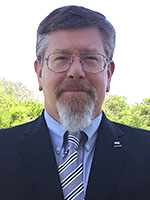
Doughboy Meets World: The American Soldier and the Europeans 1917-1918
World War I marked the first-time vast numbers of Americans came into close contact with peoples and cultures in foreign lands. By the time of the Armistice, over two million Doughboys were serving in France and Britain and several thousand of these soldiers went on to serve in the Army of Occupation in the German Rhineland. This lecture will examine the Doughboys' interactions with, and opinions of, the European soldiers and civilians that they encountered while serving in the American Expeditionary Forces. It will also explore how these interactions shaped the Doughboys' perceptions of being Americans.
Biography
Richard Shawn Faulkner is the General William H. Stofft Chair of Military History of the United States Army Command and General Staff College at Fort Leavenworth, Kansas. He served for 23 years in the Army as an armor officer. His assignments included serving as a tank company commander in the 1st Armored Division during Operation Desert Storm and as an instructor of American History at the United States Military Academy at West Point. He holds a Master's Degree in American History from University of Georgia and a PhD in American History from Kansas State University. He is the author of The School of Hard Knocks: Combat Leadership in the American Expeditionary Forces (Texas A&M Press, 2012), which was the recipient of the Society for Military History's 2013 Distinguished Book Award. His second book, Pershing's Crusaders: The American Soldier in World War I was published by the University Press of Kansas in 2017.
Jennifer D. Keene
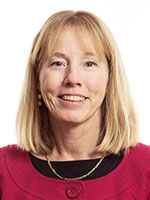
What Did It All Mean? American Soldiers in World War I
What did the war mean in the lives of the men who fought it? Many twentieth-century ideas of how to raise an army and what it means to be a soldier took shape during WWI. The composition of the army reflected the diversity of the nation (20% were foreign-born; 13% were African American) and the new needs of industrial warfare (60% served in support or service roles). Nonetheless, there were common elements to military service, most particularly the way that military service served as a politicizing experience and a pivotal lifetime event for the generation that served.
The Long Road to Peace - panel conversation, Nov. 2 at 6 p.m.
Peace negotiations were conducted alongside military conflict from the outset of WWI, but it was President Wilson’s attempt to arbitrate in Dec. 1916 that initiated the serious push for peace. By then, the fighting on the Western Front had revealed the full horror of modern industrial warfare. However, Wilson discovered that to secure peace America would have to join the fight. Professors Jay Sexton and Jennifer Keene discuss Wilson’s vision for peace and a new world order, US military preparedness in 1917, and domestic reactions to US entry into the War. In partnership with ChromeRadio.
Biography
Jennifer D. Keene is a specialist in American military experience during World War I. She is currently President of the Society of Military History and has published three books on the American involvement in the First World War: Doughboys, the Great War and the Remaking of America (2001), World War I: The American Soldier Experience (2011), and The United States and the First World War (2000). She is also the lead author for an American history textbook, Visions of America: A History of the United States that uses a visual approach to teaching students U.S. history. She has received numerous awards for her scholarship, including Fulbright Senior Scholar Awards to France and Australia and Mellon Library of Congress Fellowship in International Studies. She served as an associate editor for the Encyclopedia of War and American Society (2005) which won the Society of Military History's prize for best military history reference book. She co-edited, along with Michael Neiberg, Finding Common Ground: New Directions in First World War Studies (2011).
Saje Mathieu
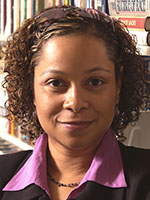
Lafayette We Are Here: African Americans and the Promise of 1917
1917 marked a pivotal shift in African Americans’ quest for civil rights, especially after Woodrow Wilson’s declaration that making the world safe for democracy had become America’s singular responsibility. As the nation’s focus shifted from war in the Mexican borderlands to war on the Western Front, African Americans anticipated that their military expertise would be put to work halting the Central Powers. When it was not, the armed forces became yet another theater for civil rights reform. Even before African American soldiers disembarked in France, a different war broke out on American streets, as East St. Louis, then Houston, erupted in riot. In those cases, black intellectual-activists proved vital in galvanizing African Americans to their own defense. By refusing to cower from the indignities and violence inherent in the Jim Crow system, and by seeking sanctuary in burgeoning cities, African Americans showcased a level of defiance all the more impressive against the background of the Great War’s strict policing of dissent. This paper will explore how 1917 set the tone for the civil rights battles waged by African Americans, both on the homefront and on the Western Front.
Biography
Sarah-Jane (Saje) Mathieu is Associate Professor in the Department of History at the University of Minnesota. She specializes in twentieth century American and African American history with an emphasis on race, war, globalization, immigration, social movements, and political resistance. Her first book North of the Color Line: Migration and Black Resistance in Canada, 1870-1955 (The John Hope Franklin Series in African American History and Culture, UNC Press, 2010) examines the social and political impact of African American and West Indian sleeping car porters in Canada. She is currently working on her next book, The Glory of Their Deeds: A Global History of Black Soldiers and the Great War Era. The book examines explores how race shaped the politics of enlistment and engagement in the British, Canadian, African, Caribbean, French, American, and German armies. It also investigates how black intellectual-activists galvanized new transnational models of political resistance in response to international outbreaks of racialized violence. Her work has earned a National Endowment for the Humanities award. She is also a former fellow at the Schomburg Center for Research in Black Culture, at Harvard’s W. E. B. Du Bois Institute, and Heidelberg University’s Center for American Studies.
Michael S. Neiberg
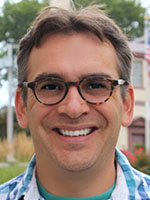
America's Road to War, 1914-1917
American entry into the Great War resulted from lengthy debate and soul-searching about national identity and the nation’s role on the world stage. This talk will track American responses to the outbreak of the war in 1914, the sinking of the Lusitania in 1915, and the debates about military preparedness in 1916. American views shifted as global events increasingly threatened national security. By April 1917 most Americans, including most of those who had opposed the war in 1914, had come to see belligerence as America’s only remaining option. Rather than seeing American entry into the war as an exceptional event, we need to understand it as fundamental to American history and America’s relationship to the world in the century since.
Biography
Michael S. Neiberg is the inaugural Chair of War Studies in the Department of National Security and Strategy at the United States Army War College. His published work specializes on the First and Second World Wars, notably the American and French experiences. His most recent book on the First World War is Dance of the Furies: Europe and the Outbreak of World War I (Harvard University Press, 2011). The Wall Street Journal recently named it one of the five best books ever written about the war. Basic Books published his The Blood of Free Men: The Liberation of Paris, 1944 (2012). In May 2015, Basic Books published his Potsdam: The End of World War II and the Remaking of Europe. Oxford University Press published The Path to War: How the First World War Created Modern America (2016).
Olga Porshneva
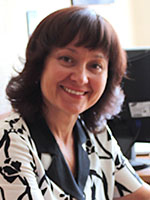
Russian soldiers' beliefs and attitudes as a factor of the Russian Revolution of 1917
This presentation discusses constituent beliefs and attitudes of Russian soldiers prior to and during the 1917 Revolution. Soldiers who were disappointed by Russia’s faring in the First World War and were disillusioned with military and civil governance took part in riots of the February (March) Revolution of 1917. The analysis of mass correspondence, resolutions adopted at soldiers' meetings, and other sources demonstrate that utopian ideals of social and political justice and just allocation of land were central to soldiers' mindset because 81% of soldiers were of peasant descent. Together with other factors, these aspirations played a key role in the transformations of soldiers' mood and behavior throughout the Revolution. The utopian 'instincts of justice' and yearning for peace contributed to radicalization of the Revolution, ensuing victory of the Bolshevik Party, and subsequent formation of the revolutionary mythology.
Biography
Olga Sergeevna Porshneva is a Professor of Russian History in the Ural Institute for Humanities at Ural Federal University in Yekaterinburg, Russia. After graduating with honors from the Department for Humanities at Novosibirsk State University, she earned her PhD equivalent in Russian History and successfully defended her post-doctoral dissertation in Russian History, “The Mentality and Social Behavior of Russian Workers, Peasants and Soldiers during World War I (1914-1918)”, which was marked by the Highest Attestation Committee of Russia as the best doctoral thesis in the field of Russian History in 2000. She has authored more than 250 published monographs and articles, including “Allies’ Image in Russian Consciousness in the Context of World Wars” in New Chronograph (2012). Porshneva is a member of the Russian Association for Intellectual History, Russian Association for the First World War Studies, and of the Expert Board for History of the Highest Attestation Committee of the Ministry for Education and Science of the Russian Federation.
Erik R. Scott
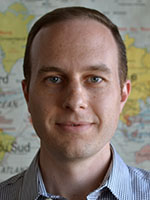
Unmaking and Remaking an Empire: Beyond the "Russian Revolution”
If 1917 marked a pivotal year for the United States, it was even more transformative for Russia. Centuries of tsarist rule came to an abrupt end, and socialist revolutionaries came to the fore. While it is common to think of it as a single event occurring in one country, the so-called Russian Revolution in fact encompassed a series of national revolutions unfolding across the remnants of a vast Eurasian empire. Revolutionary fervor was often greatest among groups for whom class revolution and national revolution coincided, and Jews, Latvians, Poles, and Georgians all joined the socialist cause with exceptional enthusiasm. As the revolution was institutionalized, members of ethnic diasporas were overrepresented in very visible positions of power throughout the new Soviet state. Together, they sought to build an anti-imperialist union but ended up creating a new kind of empire.
Biography
Erik R. Scott is an Associate Professor of Russian History at the University of Kansas. Drawing on years of fieldwork and knowledge of several regional languages, his research and teaching explore migration and diaspora within and beyond the imperial borders of Russia and Eurasia. His book, Familiar Strangers: The Georgian Diaspora and the Evolution of Soviet Empire, was published by Oxford University Press in 2016. The book contests the portrayal of the Soviet Union as a Russian-led empire and instead argues that it was an empire of diasporas, forged through the mixing of a diverse array of nationalities behind external Soviet borders. Bringing to light the history of a remarkably successful group of ethnic outsiders at the heart of Soviet empire, Familiar Strangers reinterprets the course of modern Russian and Soviet history. His current book project, Soviet Defectors and the Borders of the Cold War World, follows the unauthorized movement of people across Soviet state lines. Through an examination of the political and cultural phenomenon of Soviet defection, the book investigates how the national and ideological borders of the Cold War were defined, disputed, and transgressed. Professor Scott has been awarded grants from the American Council of Learned Societies, the American Philosophical Society, Fulbright-Hays, and the National Endowment for the Humanities, among others. He teaches undergraduate and graduate courses on Russian and Soviet history, the Cold War, comparative empires, and global migration. He received his Ph.D. from the University of California, Berkeley.
Jay Sexton
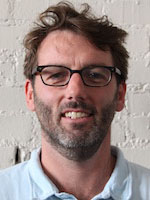
The Long Road to Peace - panel conversation, Nov. 2 at 6 p.m.
Peace negotiations were conducted alongside military conflict from the outset of WWI, but it was President Wilson’s attempt to arbitrate in Dec. 1916 that initiated the serious push for peace. By then, the fighting on the Western Front had revealed the full horror of modern industrial warfare. However, Wilson discovered that to secure peace America would have to join the fight. Professors Jay Sexton and Jennifer Keene discuss Wilson’s vision for peace and a new world order, US military preparedness in 1917, and domestic reactions to US entry into the War. In partnership with ChromeRadio.
Biography
Jay Sexton is the inaugural Kinder Institute Chair in Constitutional Democracy and Professor of History at the University of Missouri. A graduate of KU, he returned to the Midwest in 2016 after spending the better part of two decades at Oxford University. Sexton started in Oxford as a grad student Marshall Scholar, was the Director of the Rothermere American Institute and, upon his departure, was elected to the honorary title of Distinguished Fellow. Sexton specializes in the political and economic history of the nineteenth century. His research situates the United States in its international context, particularly as it related to the dominant global structure of the era, the British Empire. He is the author of Debtor Diplomacy: Finance and American Foreign Relations in the Civil War Era, 1837-1873 (2005) and The Monroe Doctrine: Empire and Nation in Nineteenth-Century America (2011). He also has published two major collaborative projects: The Global Lincoln (co-edited with Richard Carwardine, Oxford, 2011) and Empire’s Twin: U.S. Anti-Imperialism from the Founding to the Age of Terrorism (co-edited with Ian Tyrrell, Cornell, 2015).
David Stevenson
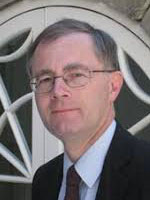
American Intervention and World Politics: War and Diplomacy in 1917
This presentation will re-assess the Wilson administration’s plans for America’s war effort, and how those plans expanded between April 1917 and Jan. 1918. Naval, military, economic, and diplomatic aspects will all receive attention, as will the impact of American intervention on the Allies and the Central Powers.
Biography
David Stevenson is the Stevenson Professor of International History at the London School of Economics and Political Science (LSE). He was awarded a First-Class Honours Degree from Cambridge, followed by a PHD for thesis in history entitled: 'French War Aims against Germany, 1914-1918.' His publications include With Our Backs to the Wall: Victory and Defeat in 1918 (2011) and 1914-1918: the History of the First World War (2004) which also appears in Italian and German translations. Stevenson has recently co-edited and contributed to a book for Oxford University Press: Arms Races in International Politics from the Nineteenth to the Twenty-First Centuries (2016) as well as An Improbable War? The Outbreak of World War I and European Political Culture before 1914 (2007). His newest book, 1917: War, Peace, and Revolution, will be published in Oct. 2017. He is a member of the Imperial War Museum’s academic advisory committee for its First World War Galleries and is the adviser to ‘Europeana 1914-1918 Learning Website’. He is also a Fellow of the Royal Historical Society and a Fellow of the Historical Association, a PhD External Examiner, External Examiner, President of the Central London Branch of the Historical Association, and Hon. Secretary of the Herts & Essex Architectural Society.
Hew Strachan
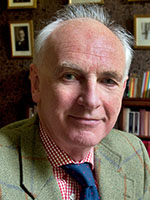
Attendee Notice: Unfortunately, due to a medical issue, Sir Hew Strachan will be unable to participate in the program. Author/professors Jennifer Keene and Jay Sexton will proceed in conversation with Sir Strachan’s questions and share their insights.
The Long Road to Peace - panel conversation, Nov. 2 at 6 p.m.
Peace negotiations were conducted alongside military conflict from the outset of WWI, but it was President Wilson’s attempt to arbitrate in Dec. 1916 that initiated the serious push for peace. By then, the fighting on the Western Front had revealed the full horror of modern industrial warfare. However, Wilson discovered that to secure peace America would have to join the fight. Professors Jay Sexton and Jennifer Keene discuss Wilson’s vision for peace and a new world order, US military preparedness in 1917, and domestic reactions to US entry into the War. In partnership with ChromeRadio.
Biography
Sir Hew Strachan FRSE, Hon D. Univ (Paisley) was Chichele Professor of the History of War at the University of Oxford and is now Professor of International Relations at the University of St Andrews. He is an Emeritus Fellow of All Souls College, Oxford and a Life Fellow of Corpus Christi College, Cambridge. His recent books include The First World War: Volume 1: To Arms (2001), The First World War: an illustrated history (2003), Clausewitz’s On War: a Biography (2007), and The Direction of War (2013). He is the editor of The Oxford Illustrated History of the First World War (revised edition, 2014), and a clutch of volumes arising from his Directorship of the Oxford Changing Character of War Programme. He is a member of the Chief of Defence Staff’s Strategic Advisory Panel, the Defence Academy Advisory Board, and the Council of the International Institute for Strategic Studies, and has been a specialist advisor to the Joint Parliamentary Committee on the National Security Strategy in the recently dissolved Parliament. He is a Trustee of the Imperial War Museum and a Commonwealth War Graves Commissioner, and serves on the both the United Kingdom’s and Scotland’s national advisory panels for the centenary of the First World War.
In Conversation: Exhibiting the War
How can an exhibition convey the experience of war? During the centennial of the First World War, museum curators and experts join a panel discussion to look at the unique challenges—and victories—of interpreting the history, tragedy and lasting effects of warfare for modern audiences.
Robert Cozzolino
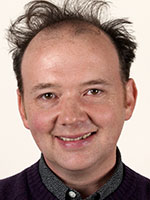
Biography
Robert Cozzolino is the Patrick and Aimee Butler Curator of Paintings at the Minneapolis Institute of Art (Mia). He studied at the University of Illinois at Chicago before receiving his MA and PhD from the University of Wisconsin–Madison. Formerly the senior curator and Evelyn and Will Kaplan Curator of Modern Art at the Pennsylvania Academy of the Fine Arts (PAFA) in Philadelphia, he oversaw more than 30 exhibitions, including retrospectives of George Tooker, Peter Blume, and Elizabeth Osborne plus many thematic exhibitions. His work has emphasized regional diversity, integrating artists of Illinois, Wisconsin, California, and other areas into installations, thematic exhibitions, and his scholarship. In 2014, Cozzolino organized the largest American museum exhibition of David Lynch’s visual art and authored David Lynch: The Unified Field. Two exhibitions that he co-curated at PAFA are currently on tour: "World War I and American Art," appearing at the Frist Center for the Visual Arts through January 21, 2018 and "Subversion in the Art of Honoré Sharrer" appears at the Smith College Museum of Art through January 7, 2018.
Brian Horrigan
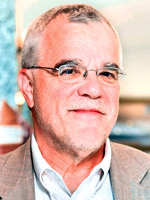
Biography
Brian Horrigan has been an Exhibit Curator at the Minnesota Historical Society since 1990. He was the lead developer and curator for WW1 America, the only national traveling history exhibit on the US role in World War I. The exhibition opened at the Minnesota History Center in April 2017, and will travel to three other museums and historical societies in the United States from 2018-20. WW1 America was supported by major grants from the National Endowment for the Humanities, including a "Chairman's Special Award" for implementation in 2016. Brian has also been responsible for the development of other major exhibitions, including The 1968 Exhibit (2011) and Minnesota's Greatest Generation (2009), which also received major funding from the NEH. In 2011-12, he was a fellow at the Institute for Advanced Study at the University of Minnesota. He is currently completing work on an NEH-funded study of Charles Lindbergh and American cultural history.
Doran Cart
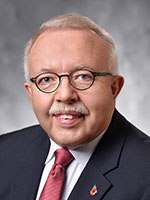
Biography
Doran Cart has been the curator since April 1990 and Senior Curator since 2011 at the National WWI Museum and Memorial. Having lived in Kansas City, Missouri since 1985, he has been involved in the restoration of the memorial, the creation of the current world-class museum and the growth of the museum collection into the most diverse collection on the war. He has a B.A. in history from Indiana University and an M.A. in Museum Studies and History from the University of California, Riverside. Since he started his professional career in 1974, Doran has worked in museums, at historic sites and in historic preservation from Indiana to California to Florida and finally in Kansas City. He has written a number of articles on historical subjects and edited two books, including the first illustrated English-language edition of All Quiet on the Western Front (1996). Cart has been interviewed on the national Fox News, for shows on the HISTORY Channel, PBS’ History Detectives and by local, regional and international media. He is the 2017 recipient of the Patrick Henry Award for Patriotic Achievement by the Dallas Chapter of the Military Order of the World Wars.
WHO SHOULD ATTEND?
All who have a general to professional interest in the periods prior to, during and after World War I. We especially recommend this symposium to educators, historians and members of organizations that study these periods and/or engaged in planning projects and programs for the war’s centennial. Are you a member of the World War One Historical Association? As a partnering organization, their annual meeting and other great opportunities coincide with this symposium.=
SYMPOSIUM FEE
The registration for the symposium is:
- $195 early bird pricing (Deadline: Oct. 6, 2017)
- $245 per person (After Oct. 6, 2017)
The registration provides attendees:
- Admittance to the panel program and podcast recording by Hew Strachan, Jay Sexton, and Jennifer Keene on Thursday, Nov.2 at 6 p.m.
- Presentations on Friday, November 3 and Saturday, Nov. 4 by featured speakers.
- Lunch at the Museum and Memorial on Friday, Nov. 3
- Dinner with two complimentary drinks on Friday, Nov. 3
- Lunch at the Museum and Memorial on Saturday, November 4
- Admittance to the Museum and Memorial's exhibits including Revolution, 1917!
- Participation in C-SPAN recordings
SUPPORTERS
The Symposium is presented by the National WWI Museum and Memorial and the U.S. World War One Centennial Commission in partnership with the World War One Historical Association, KU Center for Russian, East European & Eurasian Studies (CREES) and the Command and General Staff College Foundation, Inc. and is sponsored by the Charles Bacon Fund. Special thanks to our presenting sponsors, Bill and Laura Frick.
HOTEL ROOMS
A block of rooms is set aside at the Kansas City Marriott Country Club Plaza. Please contact the hotel for availability, further rate information, and to make your reservation. To receive the special rate of $147 a night, reservations must be completed by Oct. 18. Rooms at this rate at the Marriott Country Club Plaza have sold out.
Curious about the Museum and Memorial's Symposiums?
Watch videos of the presentations from the 2016 Symposium, 1916: TOTAL WAR, the 2015 Symposium, 1915: EMPIRES AT WAR, CHURCHILL'S GALLIPOLLI AND AN AMERICA DIVIDED and the 2014 Symposium, 1914: GLOBAL WAR AND AMERICAN NEUTRALITY on YouTube.
